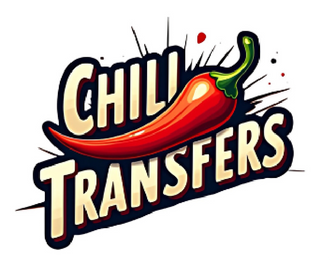DTF Materials: The Backbone of High-Quality Printing 🖨️✨
When it comes to high-performance garment printing, dtf materials play a vital role in determining the outcome. DTF (Direct-to-Film) printing has taken the textile industry by storm, offering flexibility, vibrant colors, and durability. But the final result doesn’t rely solely on the printer—it’s the combination of well-selected materials that sets exceptional prints apart from the rest. 🎨👕
In this article, we’ll explore the essential materials used in DTF printing, how they function together, what to look for when sourcing supplies, and how businesses can maximize print quality and efficiency.
What Is DTF Printing and Why Do Materials Matter?
DTF, or Direct-to-Film printing, is a method where designs are printed onto a special PET film, then transferred onto fabric using heat and adhesive powder. This technique eliminates the need for pretreatment and allows for high-detail, full-color designs on cotton, polyester, and blended fabrics.
To learn more about the core process, you can visit Wikipedia – Direct-to-Film Printing.
The success of the print depends largely on the materials involved. Using poor-quality supplies can result in color loss, peeling, or cracking over time, while professional-grade materials ensure vibrant, lasting results.
Core Components of the DTF Printing System 🧩
1. PET Film – The Print Foundation 🎥
Polyethylene terephthalate (PET) film is where the magic starts. This transparent or semi-transparent sheet receives the ink before it's transferred to the garment.
Features to look for:
-
Cold or Hot Peel Options: Choose depending on your heat press workflow.
-
Double-Sided Coated Film: Helps with better ink absorption and anti-static properties.
-
Thick and Durable: Should resist curling and warping under heat.
💡 Shop premium films at ChilitTransfers.
2. DTF Inks – Vivid and Durable Colors 💧
DTF inks are pigment-based and formulated for textile durability. They include white and CMYK inks designed to bond well with powder adhesives and fabric.
Key qualities:
-
Water-based pigments: Safe and eco-conscious.
-
High color density: Needed for accurate and saturated prints.
-
Compatibility: Always use inks compatible with your DTF printer model.
3. Adhesive Powder – The Bonding Agent 🔥
After the ink is printed onto the PET film, a powdered adhesive is applied to help it stick to the garment during heat pressing.
Main options:
-
White or Black Powder: Choose based on the fabric or design background.
-
Fine or Coarse Textures: Finer powders melt faster and create a softer feel.
-
Curing Temperature: Check powder specs for optimal melting points.
🛒 Browse top-rated DTF powders at ChilitTransfers.
4. Heat Press Machine – Final Touch 🔧
Although technically not a "material," your heat press is critical in activating the adhesive and bonding the design to fabric.
Checklist for a good press:
-
Consistent temperature distribution
-
Adjustable pressure and timer
-
Compatible with cold or hot peel processes
Choosing the Right DTF Materials for Your Workflow
Consider Your Fabric Type 👕
Some materials perform better on cotton, others on synthetics. Always test combinations of ink, powder, and film to ensure adhesion, stretch resistance, and vibrancy.
Production Volume and Turnaround Time ⏱️
If you’re printing in high volume, go for materials that support fast curing and easy peeling. Cold peel films might be better for bulk processing due to time efficiency.
Storage and Shelf Life 📦
Keep inks, films, and powders in temperature-controlled environments away from moisture and UV light. This preserves chemical stability and print consistency.
How Quality Materials Impact Your Brand
Professional Finish That Sells 💼
The softness, durability, and richness of color reflect directly on your brand. Flaky, low-quality prints can damage customer trust and cause returns.
Reduce Waste and Reprints ♻️
High-quality DTF materials reduce errors, misprints, and waste—helping you save time, money, and resources in the long run.
Sustainability in DTF Material Choices 🌱
Eco-conscious printing is no longer optional. Choose:
-
Water-based inks for lower VOC emissions
-
Low-temperature adhesive powders to reduce energy use
-
Durable films that minimize reprints and waste
Using eco-friendly materials aligns with modern consumer values and adds brand credibility.
Common DTF Material Mistakes to Avoid 🚫
-
Using non-compatible ink sets: Can clog printheads or cause fading.
-
Skipping powder curing steps: Leads to poor bonding.
-
Choosing low-grade film: Can warp under heat and distort designs.
Always test your full setup before starting client orders.
Why Choose ChilitTransfers for DTF Supplies?
At ChilitTransfers, we provide high-quality DTF films, powders, and accessories trusted by professionals. Here’s why customers rely on us:
-
🧪 Lab-tested materials for performance and longevity
-
🚀 Fast shipping across the U.S.
-
👨🔧 Expert support for beginners and pros
-
💰 Competitive pricing for bulk orders
Explore our catalog to get started with premium DTF material kits today!
Related Resources on ChilitTransfers
Customer Reviews ⭐⭐⭐⭐⭐
“The film quality is amazing, and we’ve had zero cracking or fading after months!” – Linda T.
“We switched to ChilitTransfers powders and saw a big difference in press adhesion.” – Marcus D.
“Great selection and fast support. Perfect for scaling up our t-shirt line.” – Shelly G.
Conclusion
Choosing the right DTF materials is critical for achieving vibrant, long-lasting, and professional garment prints. From PET films and inks to adhesive powders and heat presses, every component contributes to your success. Whether you're running a home-based print shop or managing high-volume production, investing in quality materials makes all the difference.
Ready to elevate your DTF printing? Discover trusted products and expert support at ChilitTransfers. Your next best print starts here! 🧵🚀
